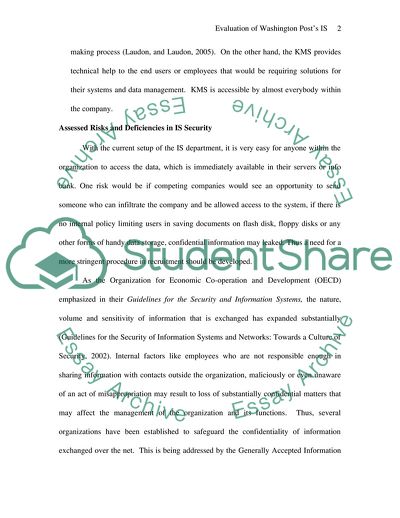Cite this document
(Policies and Procedures for Washington Posts Information System Case Study, n.d.)
Policies and Procedures for Washington Posts Information System Case Study. Retrieved from https://studentshare.org/information-technology/1704888-internal-policies-procedures-report
Policies and Procedures for Washington Posts Information System Case Study. Retrieved from https://studentshare.org/information-technology/1704888-internal-policies-procedures-report
(Policies and Procedures for Washington Posts Information System Case Study)
Policies and Procedures for Washington Posts Information System Case Study. https://studentshare.org/information-technology/1704888-internal-policies-procedures-report.
Policies and Procedures for Washington Posts Information System Case Study. https://studentshare.org/information-technology/1704888-internal-policies-procedures-report.
“Policies and Procedures for Washington Posts Information System Case Study”, n.d. https://studentshare.org/information-technology/1704888-internal-policies-procedures-report.


